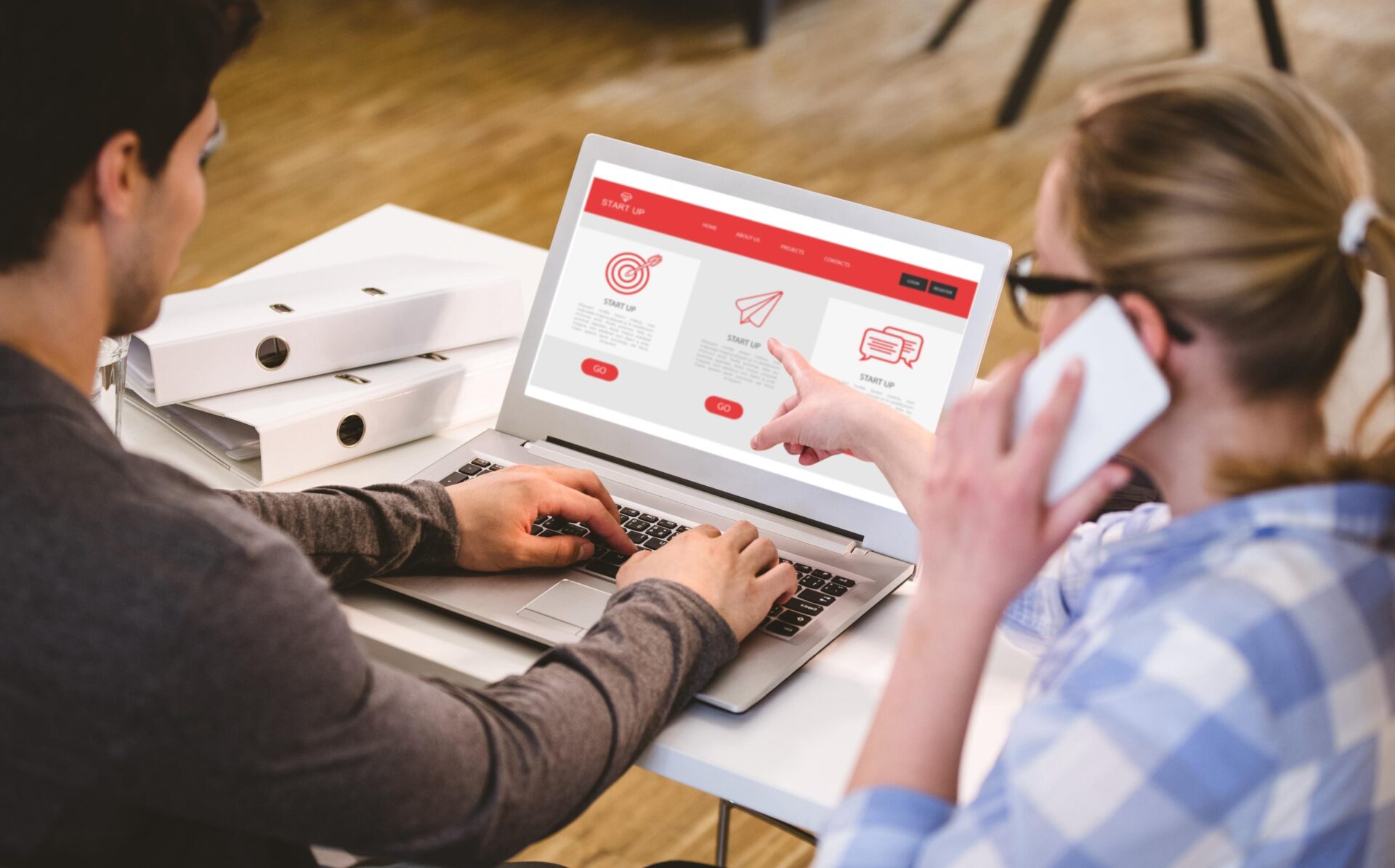When it comes to small local business websites, think of them as digital storefronts that can either attract or deter potential customers. The first impression matters, and your website is often the first touchpoint for customers. Your business can stand out in a crowded online landscape by implementing effective strategies to enhance user experience and improve local search. Explore how incorporating these best practices can elevate your website and drive more traffic and conversions for your local business.
Key Takeaways
- Prioritize mobile-friendly design for better user experience.
- Implement local SEO strategies to enhance visibility.
- Focus on clear navigation and call-to-action buttons.
- Optimize website speed for improved performance.
- Utilize user-friendly layouts for better engagement.
Importance of Mobile-Friendly Design
Having a mobile-friendly design for your small local business website is essential in today’s digital landscape. With the increasing number of users accessing websites on mobile devices, adopting a mobile-first approach ensures your site is tailored for smaller screens and touch interactions.
Design consistency across different devices is key to providing a smooth user experience, regardless of whether your customers are visiting your site on a desktop, tablet, or smartphone.
Accessibility considerations are essential when designing a mobile-friendly website. Ensuring that your site is accessible to all users, including those with disabilities, isn’t only inclusive and enhances your site’s overall usability. Incorporating features such as alt text for images and keyboard navigation makes it easier for all visitors to navigate your site effectively.
Understanding mobile user behavior is crucial in creating a successful mobile-friendly design. Users on mobile devices have different browsing habits compared to desktop users. They tend to scroll more, prefer vertical content layouts, and expect faster load times. By tailoring your design to meet these expectations, you can enhance the user experience and keep visitors engaged on your site.
Key Elements for Responsiveness
To ensure your small local business website is responsive, focus on mobile-friendly design tips like easy navigation and clear call-to-action buttons.
Implement speed optimization strategies such as image compression and minifying code for quicker load times.
Consider user-friendly layout ideas to enhance the overall browsing experience for your website visitors.
Mobile-Friendly Design Tips
For the best mobile-friendly design, make sure that your website includes key elements essential for responsiveness. When optimizing your site for mobile users, consider the following tips:
Design Consistency:
Maintain a consistent design across all devices to provide a smooth user experience. Consistent branding, layout, and navigation help users easily interact with your site on mobile devices.Font Legibility:
Ensure that your font is legible on smaller screens. Use easily readable fonts and appropriate font sizes to enhance readability on mobile devices. Avoid fancy fonts that may be difficult to read on smaller screens.Image Enhancement:
Improve images for mobile devices to enhance loading times and overall user experience. Compress images without compromising quality, use responsive images that adjust to different screen sizes, and implement lazy loading to enhance mobile performance.
Speed Optimization Strategies
Enhance your website’s speed by implementing key elements that improve responsiveness for a better user experience. To boost loading times, consider image compression. Large image files can slow down your site, so use tools to compress them without sacrificing quality. This will help pages load faster, keeping visitors engaged.
Another effective strategy is utilizing caching techniques. Caching stores copies of your website’s pages in a cache so that when a user revisits, the content loads quicker since it doesn’t need to be retrieved from the server every time.
This can greatly enhance your site’s speed and performance, leading to a more satisfying browsing experience for your audience.
User-Friendly Layout Ideas
Improve the responsiveness of your small local business website by incorporating user-friendly layout ideas that enhance the overall browsing experience for visitors.
To create a website that’s visually appealing and easy to navigate, consider the following key elements:
Color Scheme: Choose a color palette that reflects your brand identity and creates a visually pleasing experience for visitors. Use colors that complement each other and make text easily readable against the background.
Font Choices: Select easy-to-read fonts for your website content. Ensure that the font size is large enough for comfortable reading, especially on mobile devices. Consistency in font styles throughout the website helps maintain a professional look.
Whitespace: Utilize whitespace effectively to give your content room to breathe. Avoid cluttered layouts that can overwhelm visitors. Adequate spacing between elements improves readability and provides a clean, modern aesthetic to your website.
Testing and Optimization Techniques
Consider incorporating A/B testing and user feedback loops into your small local business website to refine and enhance user experience continuously. A/B testing involves comparing two webpage versions to see which one performs better, helping you make data-driven decisions for conversion optimization. User feedback loops, on the other hand, allow you to gather insights directly from your audience to understand their needs and preferences better. By combining these techniques, you can fine-tune your website to meet the specific needs of your local customers.
When implementing testing and optimization strategies, tracking key metrics and analyzing the results is crucial. Below is a table to help you understand the different aspects to take into account:
| Aspect | Description | Importance |
|---|---|---|
| A/B Testing | Compare two versions of a webpage | High |
| User Feedback Loops | Gather insights directly from your audience | Medium |
| Conversion Rates | Measure the percentage of visitors who take action | High |
| Page Load Speed | Ensure fast loading times for better user experience | Medium |
| Mobile Responsiveness | Optimize for mobile devices | High |
Implementing these strategies will not only help you improve your website but also create a more engaging experience for your visitors.
Integrating Local SEO Strategies
To enhance your small local business’s online visibility and attract nearby customers, integrating local SEO strategies is essential. By focusing on local keyword enhancement and utilizing tools like Google My Business, you can increase your chances of being found by potential customers in your area.
Here are three key steps to effectively integrate local SEO strategies:
Local Keyword Enhancement:
Conduct research to identify relevant keywords that potential customers in your local area are likely to use when searching for businesses like yours. Incorporate these keywords naturally into your website content, meta tags, and headings to improve your visibility in local search results.Google My Business Integration:
Claim and optimize your Google My Business listing by providing accurate business information, such as your address, phone number, and business hours. Encourage satisfied customers to leave positive reviews on your Google My Business profile, as this can enhance your credibility and visibility in local searches.Local Content Creation:
Develop content that’s customized to your local audience, such as blog posts, articles, or landing pages that address local events, news, or concerns. This can help establish your business as a valuable resource in the community and improve your rankings in local search results.
User Experience Considerations
When designing your small local business website, make sure to prioritize navigation simplicity and mobile responsiveness. These two key elements can improve user experience and boost customer engagement on your site.
Ensure that visitors can easily find what they need and have a smooth browsing experience across different devices.
Navigation Simplicity
Streamlined navigation enhances the user experience on small local business websites by simplifying the pathway to the desired information. When designing your website, consider the following:
Minimalist Design: Embrace a clean and clutter-free layout. Minimalist design not only looks modern but also helps users focus on essential elements without distractions. This approach enhances user engagement by directing attention to key information.
Navigation Clarity: Ensure that your menu items are clear and logically organized. Users should easily find what they’re looking for without confusion. A well-structured navigation system improves user experience and encourages visitors to explore more of your site.
Content Hierarchy: Arrange your content in a logical order based on importance. Use headings, subheadings, and visual cues to guide users through the information hierarchy. By presenting content in a structured manner, you help users navigate your site efficiently and locate relevant details quickly.
Mobile Responsiveness
Improving your small local business website’s mobile responsiveness is vital for ensuring a smooth user experience across various devices. When your site is tailored for mobile, it enhances user experience and positively impacts your Mobile SEO, making it simpler for potential customers to find you online.
A mobile-adaptive design ensures that your website adjusts effortlessly to different screen sizes, providing users with easy navigation and access to essential information.
Having a mobile-friendly website can greatly influence your conversion rates. Users who can easily navigate your site on their mobile devices are more likely to engage with your content, make purchases, or contact you for services.
A responsive design can enhance your site’s loading speed on mobile, reducing bounce rates and increasing the time visitors spend on your pages.
Monitoring and Analytics Tools
Utilizing monitoring and analytics tools is essential for tracking and measuring the performance of your small local business website. These tools provide valuable insights into your website’s effectiveness and help you make data-driven decisions to enhance its performance.
Here are three key benefits of using monitoring and analytics tools:
Traffic Analysis: By utilizing monitoring tools, you can track the number of visitors to your website, where they’re coming from, and which pages they’re visiting the most. Understanding your website traffic can help you identify popular content, improve marketing strategies, and attract more potential customers.
Conversion Tracking: Analytics tools allow you to monitor the conversion rates on your website, such as sign-ups, purchases, or form submissions. Tracking conversions helps you evaluate the effectiveness of your website in converting visitors into customers, enabling you to make necessary adjustments to enhance conversion rates.
Visitor Behavior and Engagement Metrics: Monitoring tools provide insights into visitor behavior, including how long they stay on your site, which pages they interact with, and where they drop off. Understanding visitor engagement metrics can help you tailor your website content to better meet the needs and preferences of your audience, ultimately increasing user engagement and driving conversions.
Final Thoughts
Incorporating mobile-friendly design and optimization techniques is crucial for small local business websites to thrive in the digital landscape.
While some may argue that making these changes can be time-consuming and costly, the long-term benefits far outweigh the initial investment.
By prioritizing mobile responsiveness, user experience, and local SEO strategies, businesses can attract more customers, improve visibility, and ultimately drive growth.
Don’t miss out on this opportunity to enhance your online presence!



